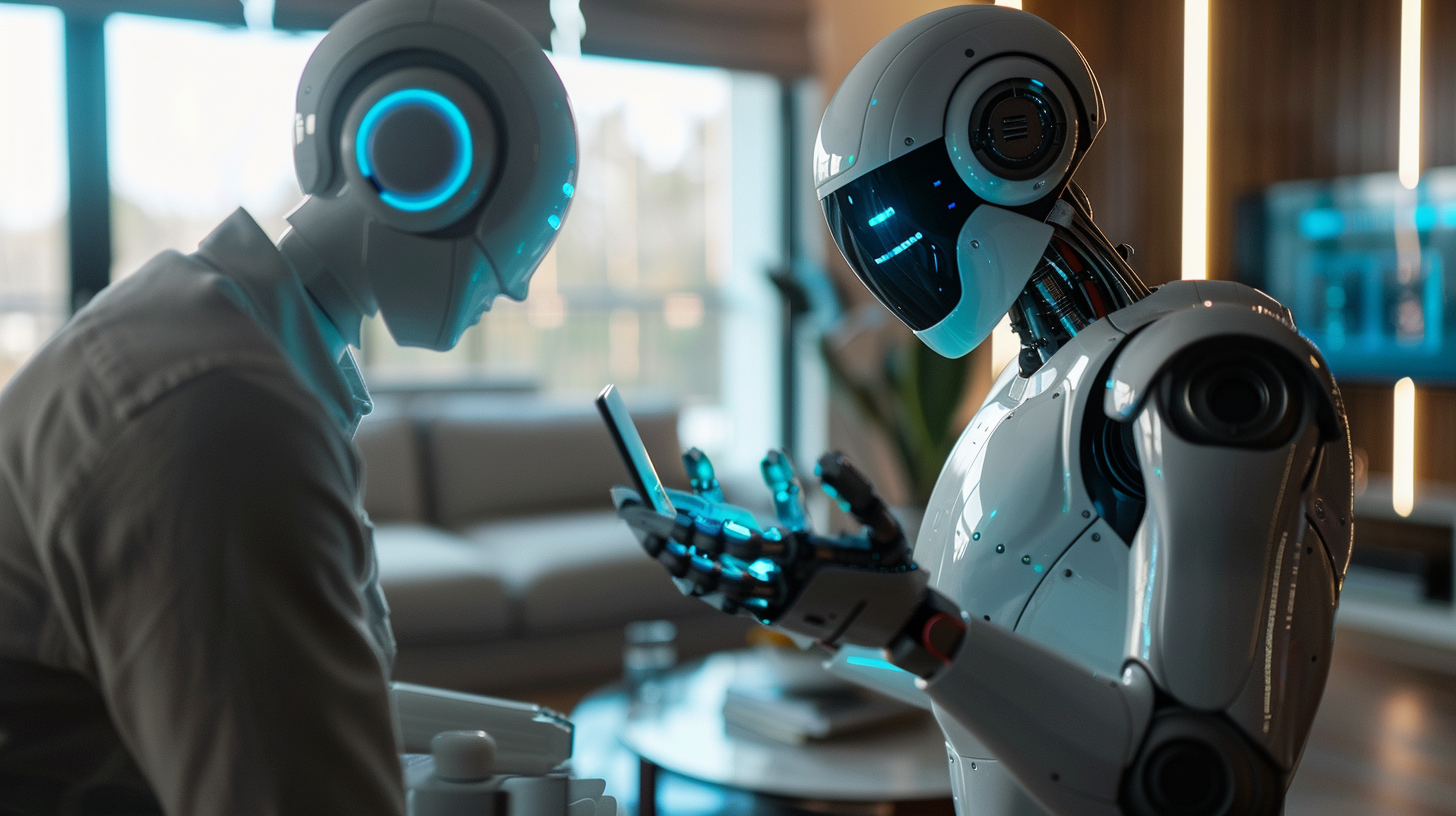TaskDrive CEO Tim Cakir, known for his fun and one-of-a-kind webinars, is back in a not-to-be missed session. In this specific webinar, attendees witnessed the live creation of a Custom GPT model. Check out the highlights of this webinar:
What is GPT?
Generative Pre-trained Transformer (GPT) is a multimodal large language model. They learn via:
- Data ingestion: the initial learning stage when they learn from billions of data available online
- Algorithm training: fine-tuning to grasp nuances
- Model refinement: continuous improvement cycles
What are custom GPTs?

Here’s something you probably already know: ChatGPT is awesome. But Custom GPTs are really where you can really drill down and have your business actually reflect your brand voice in all tasks. Here are the three main things that Tim wants to highlight about Custom GPTS:
- They empower work. Tim gives the illustration of: “1 + AI = 5 – AI” which basically means that one person using AI tools can experience 5x productivity.
- They break the monotony. AI helps you bid goodbye to 62% of repetitive tasks. Aside from helping you be more efficient, AI also helps you bid farewell to boredom. Repetitive tasks don’t tap into humans’ high cognitive power yet they take up so much time.
- They are ADHD-friendly. They provide relief from drudgery, allowing you to embrace focus and creativity.
Custom GPTs are highly personalized, provides greater efficiency, and best of all—scalable and grows with your business. Essentially, users will provide more detailed instructions, knowledge, and context to create a personalized version of GPT for the benefit of their business.
Step-by-step guide to building your own custom GPT

Let’s get started! Though ChatGPT and other AI tools are all the rage and have proven to be helpful, the promises of custom GPTs are too important to ignore. Here’s the blueprint that Tim provided:
Step 1: Make a plan
This planning stage requires answers to these questions:
- Who is your target user? Usually, it’s you or a member of your team.
- What problems do they have? What might they automate? Examples can be copywriting or even idea generation.
- Which capabilities are required?
- Web search
- Image generation
- Code evaluation
- Documentation retrieval
Step 2: Build the GPT
The GPT must contain instructions, knowledge, and capabilities.
Instructions are basically what we tell the GPT to do, similar to the prompts that are used when talking to ChatGPT. Knowledge, on the other hand, refers to documents and other resources that you can upload for the GPT to read. Capabilities are the feature sets you want your GPTs to have such as web browsing, image generation, or code generation.
Step 3: Test and iterate
Nothing is set in stone, and your GPT can continue learning and improving the more you use it and train it.
Step 4: Publish
Make it available for others to use. In ChatGPT, you can access custom GPTs via the “Explore GPT” tab.
Maximizing productivity with AI: realizing a 5x gain
Maximizing productivity with AI involves leveraging advanced technologies to automate repetitive tasks, streamline workflows, and provide data-driven insights. Realizing a 5x gain means significantly improving efficiency which can result in five times the output compared to traditional methods. Check out these numbers:
- AI can increase productivity by up to 40% in various sectors.
- Companies implementing AI saw a 20% increase in team efficiency.
- According to PwC, AI could contribute up to $15.7 trillion to the global economy by 2030, with significant gains in productivity.
Cutting-edge features you can integrate into Custom GPTs
Under the ‘capabilities’ section of the GPT builder, you will need to specify specific features that you want your custom GPT to be able to do. The usual features include:
- Web scraping: Automate data collection from websites to provide real-time information and insights.
- Image generation: Use AI to create high-quality images for marketing and content creation.
- Sentiment analysis: Analyze customer feedback and social media interactions to gauge public sentiment towards the brand.
- Natural Language Understanding (NLU): Enhance the ability of GPTs to understand and respond to complex queries in a human-like manner.
- Voice recognition: Implement voice interaction capabilities to improve accessibility and user experience.
How to educate your team on GPT usage: best practices for training and implementation
Sure, you may be the best and primary audience for the custom GPT you want to create. But to truly optimize your processes, you will eventually need to delegate some tasks to your team or perhaps even a Virtual Assistant. This may mean delegating tasks that will require them to use the custom GPTs you built, or maybe even create custom GPTs themselves.
Keep in mind some of these best practices:
- Develop comprehensive training Programs: Develop training programs that cover the basics of AI and specific applications of custom GPTs. These programs can be conducted live, or you may want to look into creating pre-recorded videos that they can watch on their own time.
- Hands-on workshops: Conduct workshops that allow team members to interact with GPTs and understand their functionalities.
- Facilitate continuous learning: Encourage a culture of continuous learning with regular updates and advanced training sessions.
- Provide clear documentation: Provide clear and detailed documentation for users and developers working with GPTs. Create blueprints, step-by-step guides, or even a simple bullet list or diagram.
- Implement feedback mechanisms: Establish channels for team members to provide feedback and suggestions for improvement.
- Conduct performance monitoring: Implement tools to monitor the performance of GPTs and ensure they are meeting business objectives.
Future trends in AI: Here’s how custom GPTs are shaping industries
Truth be told, we don’t think that the whole AI industry has stopped evolving. We’re looking forward to these possibilities:
- AI-driven personalization: User experiences will be even more enhanced through highly personalized interactions based on deep learning models.
- Augmented intelligence: There might be hybrid systems that enhance decision-making that will be created by combining human intelligence with AI.
- Industry-specific GPTs: Development of GPTs tailored to specific industries such as healthcare, finance, and retail sounds exciting.
- Explainable AI (XAI): Increasing demand for AI systems that can explain their reasoning and decision-making processes.
- AI in cybersecurity: Leveraging AI to detect and respond to cybersecurity threats in real-time.
- Sustainability through AI: Utilizing AI to optimize resource usage and support sustainable practices.
- AI-powered creativity: Using AI to assist in creative processes such as content creation, design, and music composition.
- AI and IoT integration: Seamless integration of AI with the Internet of Things (IoT) to create smart environments and systems.
Experience the best that custom GPTs have to offer
Custom GPTs offer transformative potential for businesses, enhancing brand voice and engagement through personalized and efficient interactions. By integrating cutting-edge features and balancing personalization with privacy, companies can leverage AI to drive productivity and stay ahead in their industries.
Ready to start creating your own GPTs? We won’t spoil it for you—head over to this replay of our webinar: How to Build Your Custom GPT: Step by Step. If you want to dig deeper or if you need help to get started, you can schedule a free consultation with the TaskDrive team.



